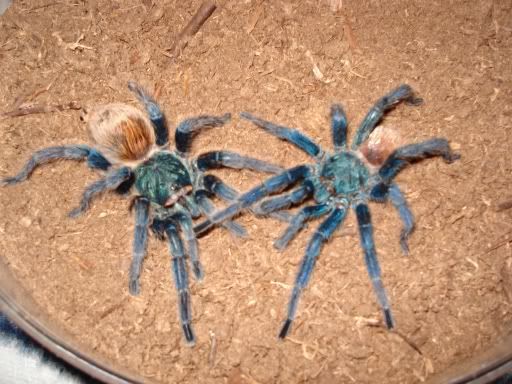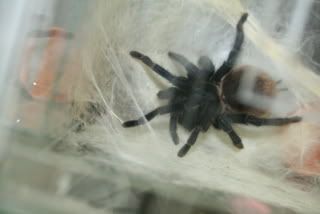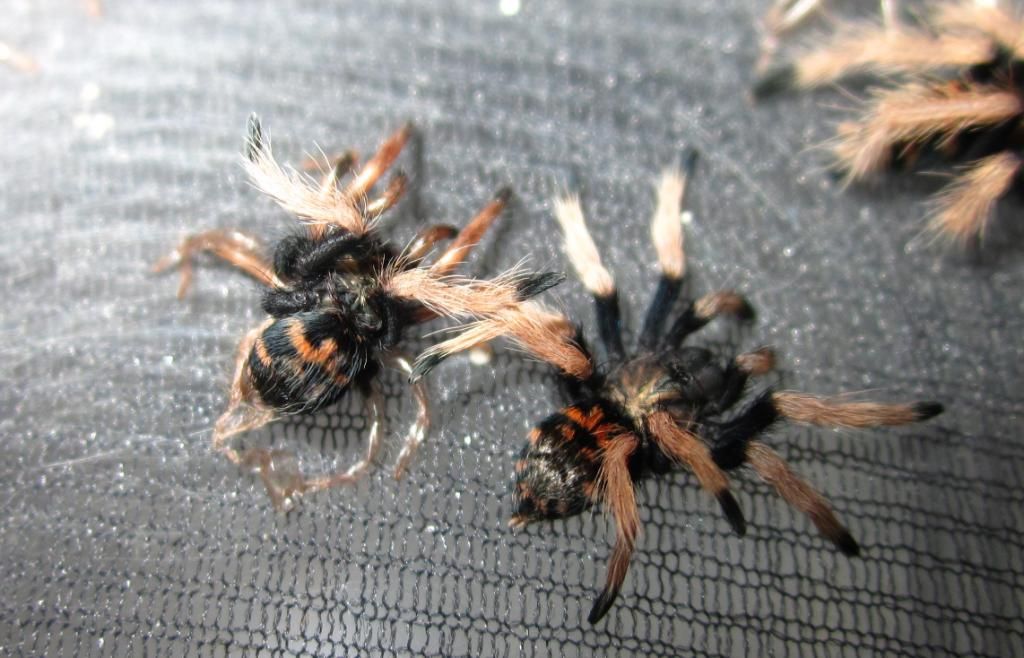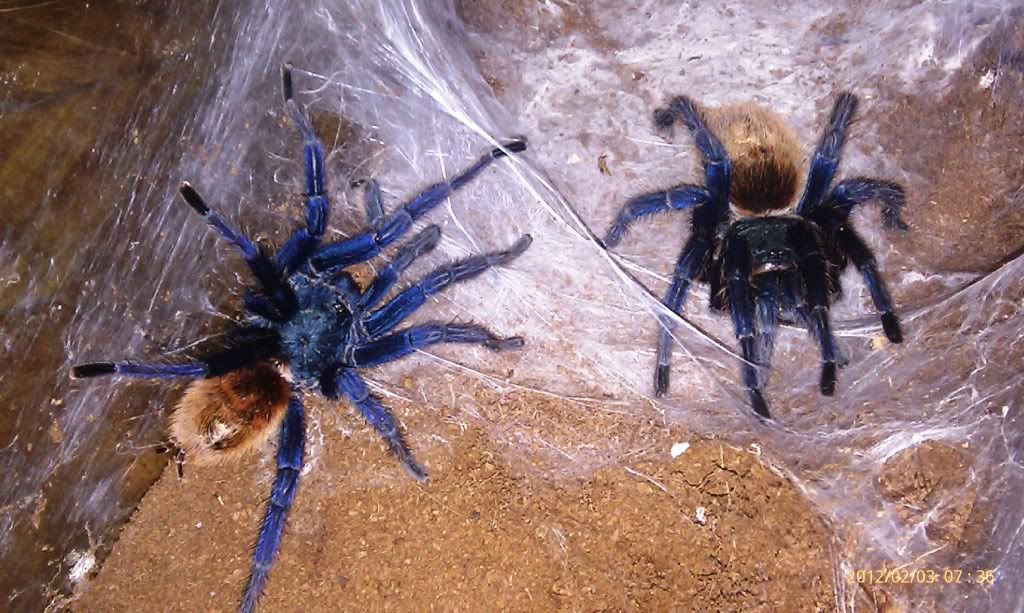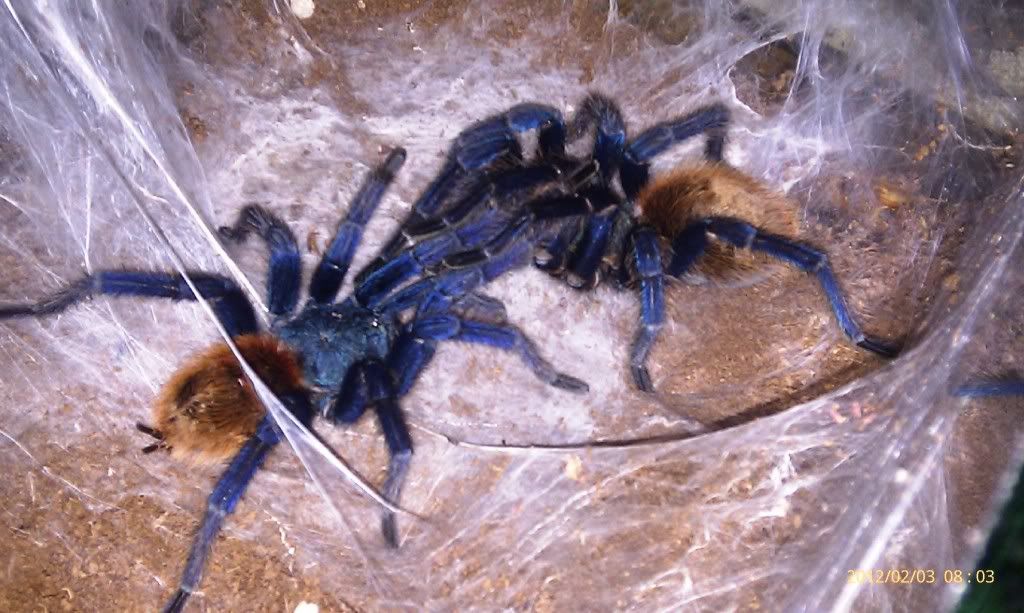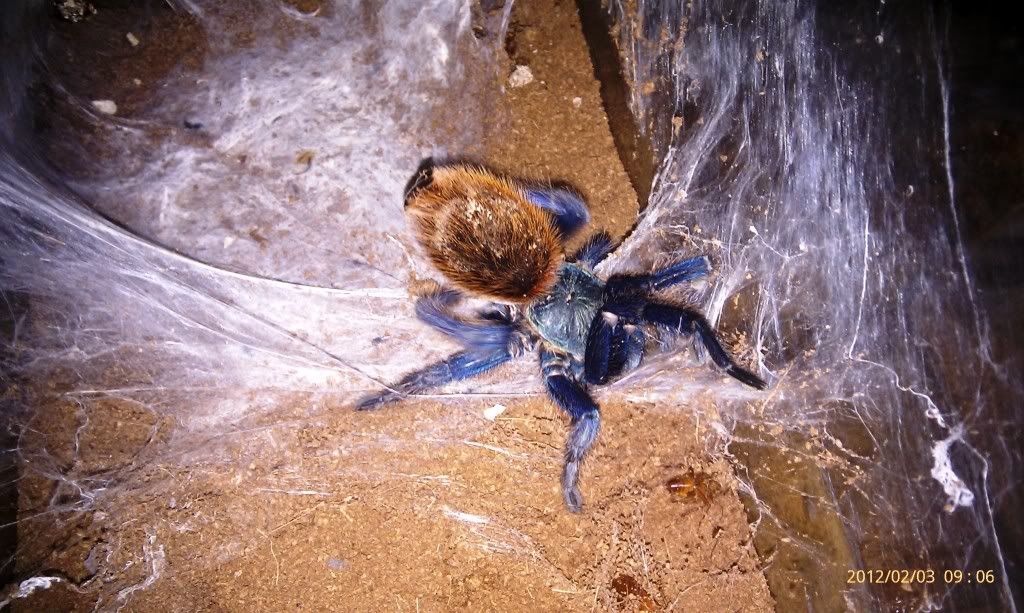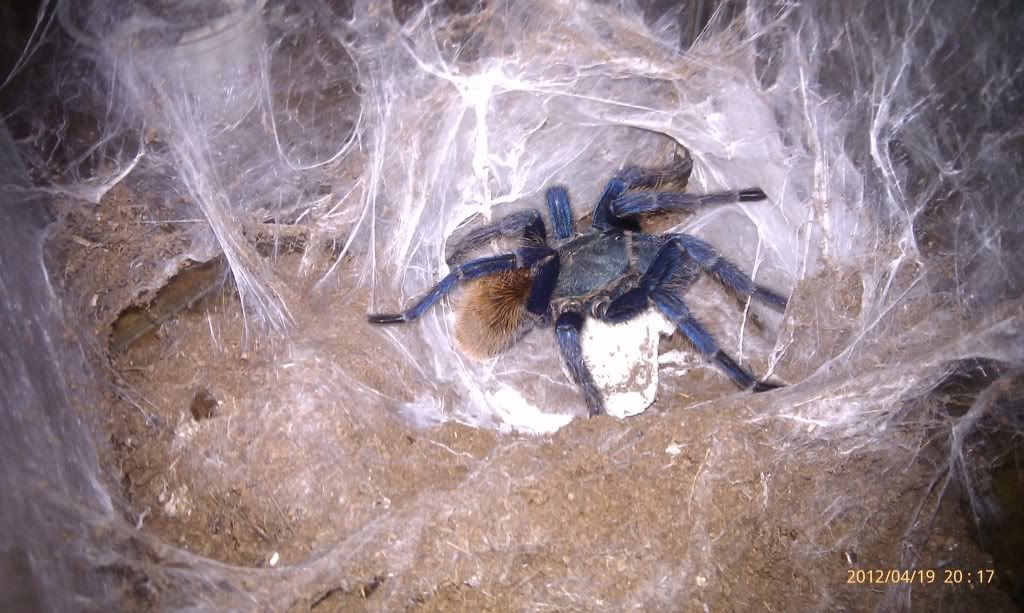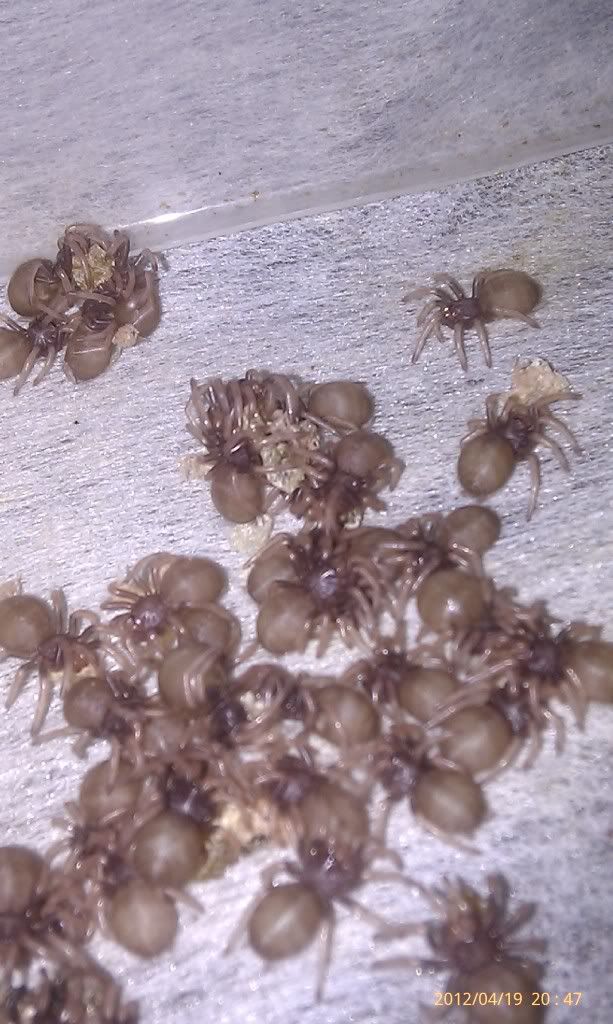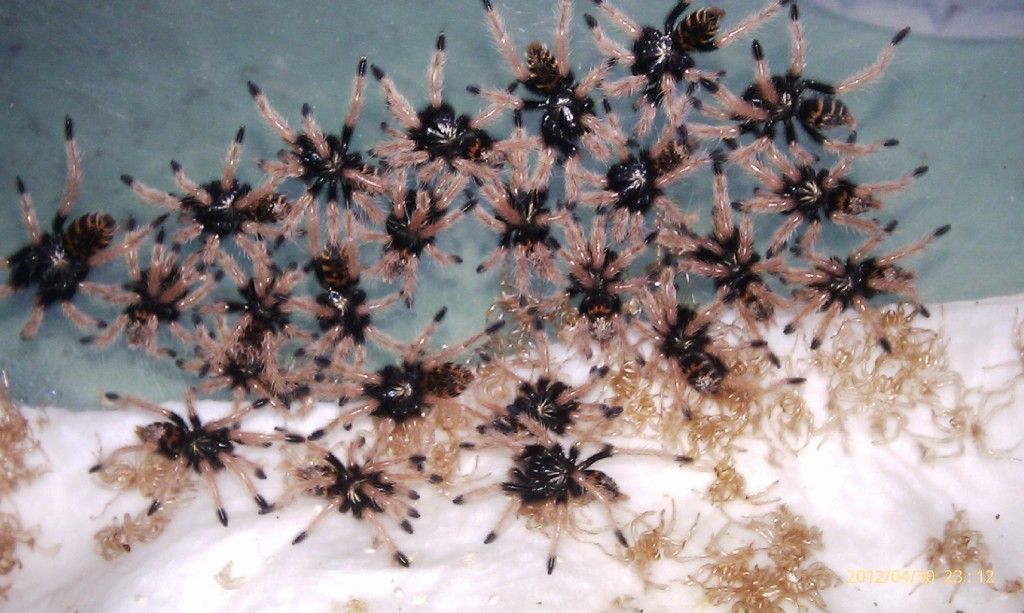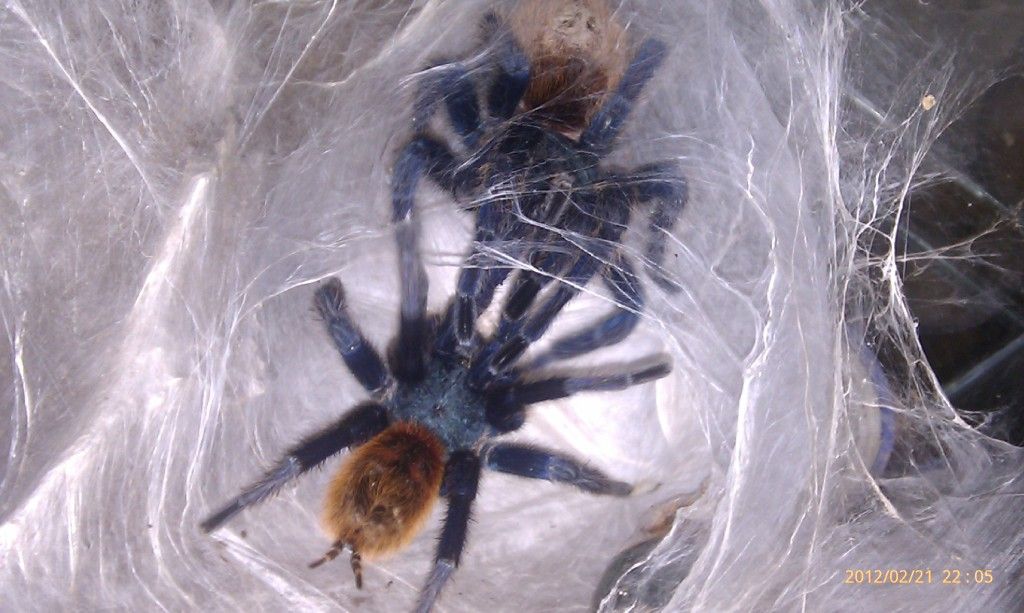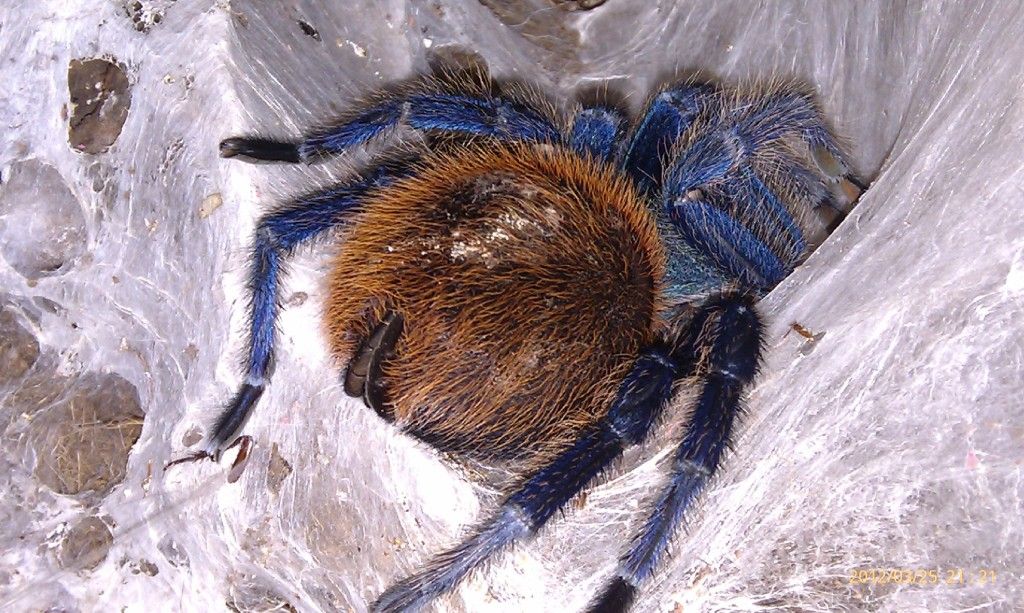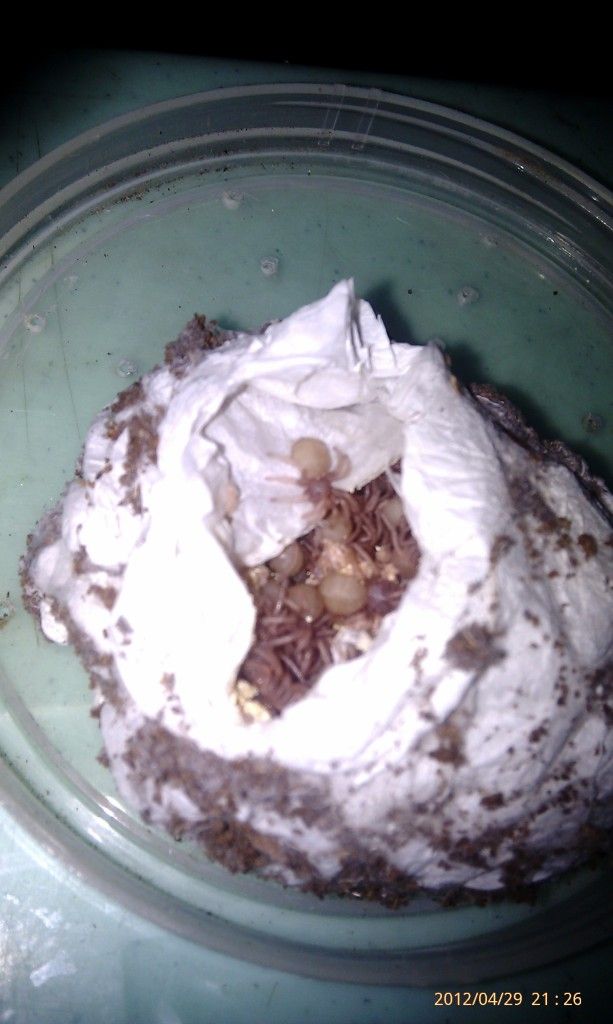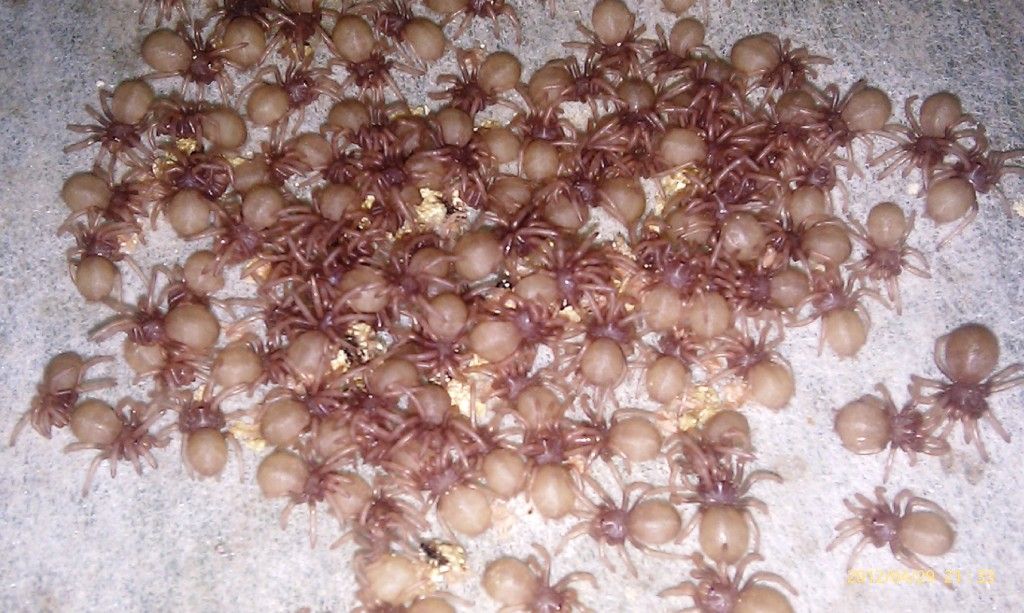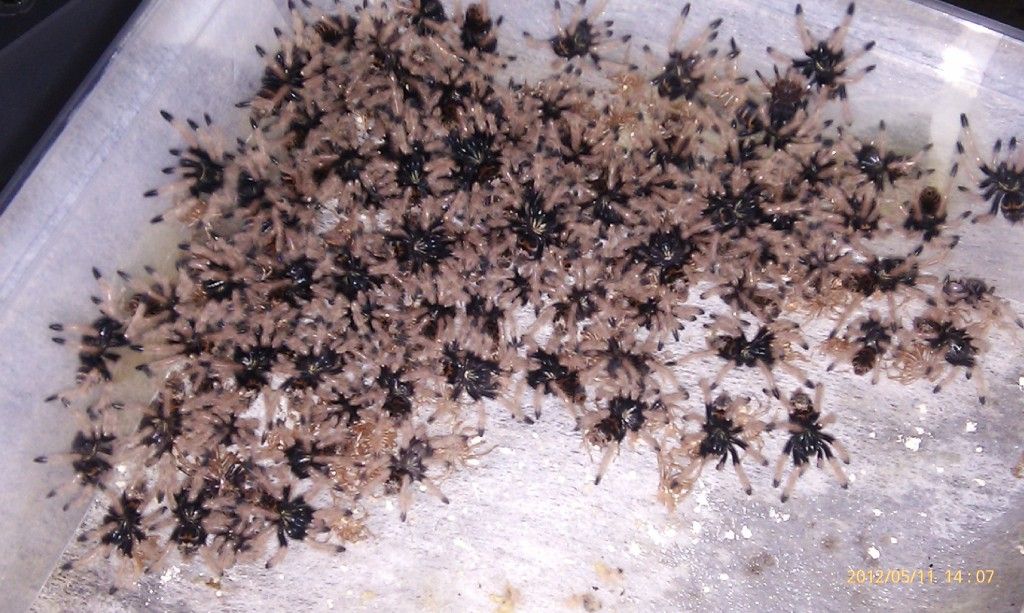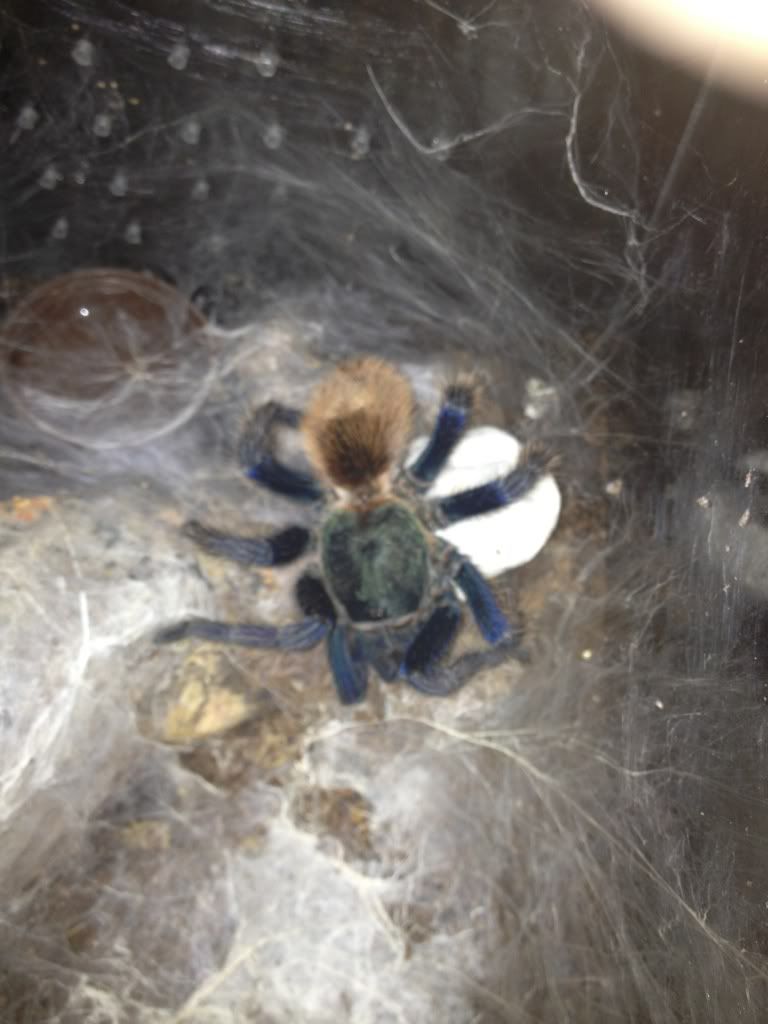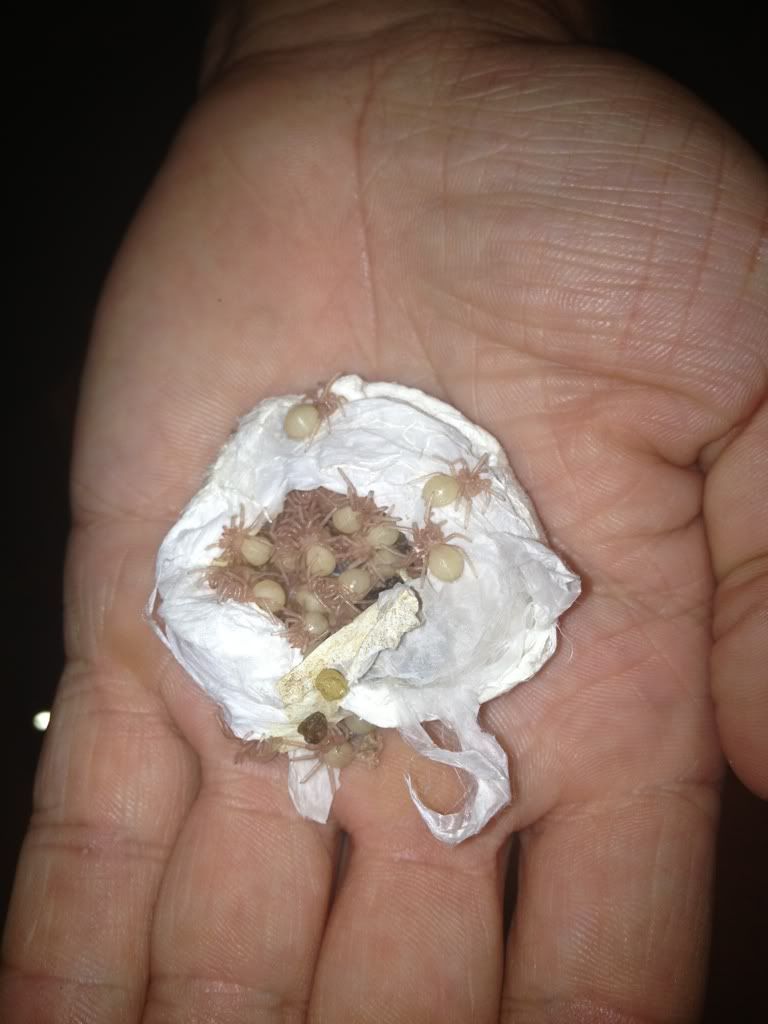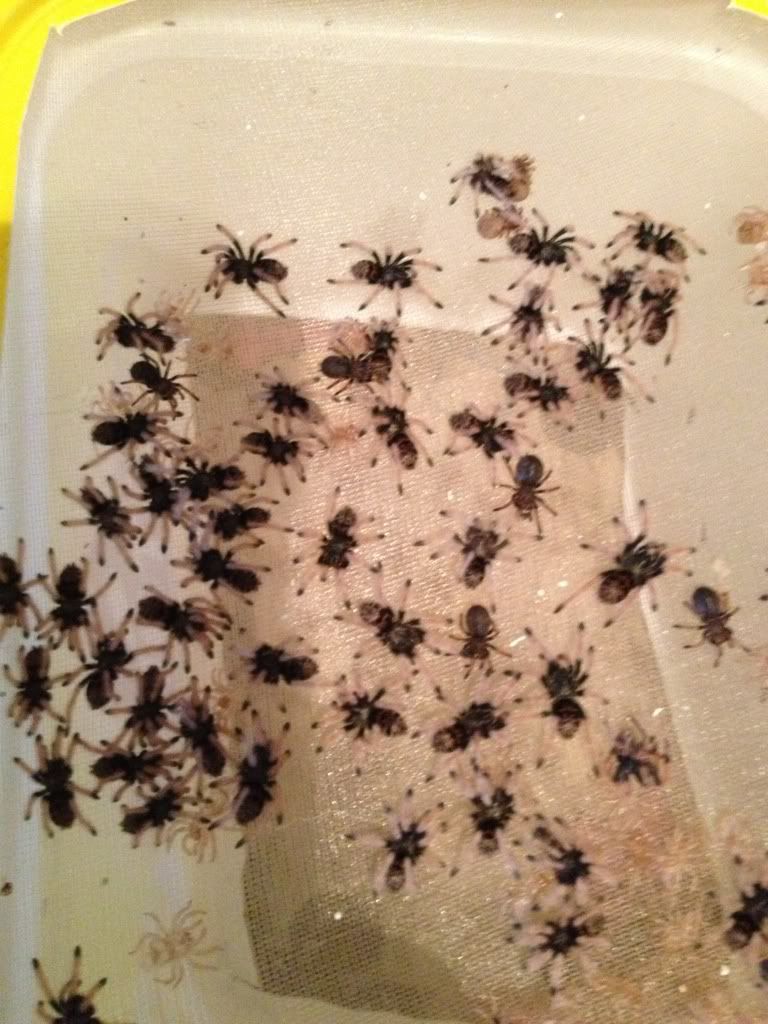- Joined
- Feb 23, 2005
- Messages
- 179
Here's my first attempt at mating C. cyaneopubescens (Green Botlle Blue).
I'll add details for the female and the male at a later date. This breeding report will deal with two female C. cyaneopubescens and one male. The male was gotten from Cacoseraph (Andrew).
03-13-2006
At 2:40 A.M. E.S.T. I introduced the male C. cyaneopubescens to my female C. cyaneopubescens. Which I'll call C1. Nothing really happened on this attempted. They both met each other and ran diffrent ways. I may try again tonight.
At 4:30 a.m. E.S.T. I decided to place the male into the females enclosure. I'll watch them until breeding takes place.
After several fruitless hours nothing has happened. So at 7:44 a.m. E.S.T. I removed the male. I'll try again tonight.
03-14-2006
Again tonight I introduced the male into female C1's container. After several hours of watching no mating had took place. The male was then removed and placed in his own container.
03-15-2006
Repeat of the two days before. I'll continue to introduce the two until the second female is ready to try breeding.
03-16-2006
Once again the male a female had nothing to do with each other. I will now shark tank the male in the females container for a few days.
Well I tried to introduce the male to the female one more time before shark tanking him. She killed him. No mating took place either.
I'll add details for the female and the male at a later date. This breeding report will deal with two female C. cyaneopubescens and one male. The male was gotten from Cacoseraph (Andrew).
03-13-2006
At 2:40 A.M. E.S.T. I introduced the male C. cyaneopubescens to my female C. cyaneopubescens. Which I'll call C1. Nothing really happened on this attempted. They both met each other and ran diffrent ways. I may try again tonight.
At 4:30 a.m. E.S.T. I decided to place the male into the females enclosure. I'll watch them until breeding takes place.
After several fruitless hours nothing has happened. So at 7:44 a.m. E.S.T. I removed the male. I'll try again tonight.
03-14-2006
Again tonight I introduced the male into female C1's container. After several hours of watching no mating had took place. The male was then removed and placed in his own container.
03-15-2006
Repeat of the two days before. I'll continue to introduce the two until the second female is ready to try breeding.
03-16-2006
Once again the male a female had nothing to do with each other. I will now shark tank the male in the females container for a few days.
Well I tried to introduce the male to the female one more time before shark tanking him. She killed him. No mating took place either.
Last edited:

